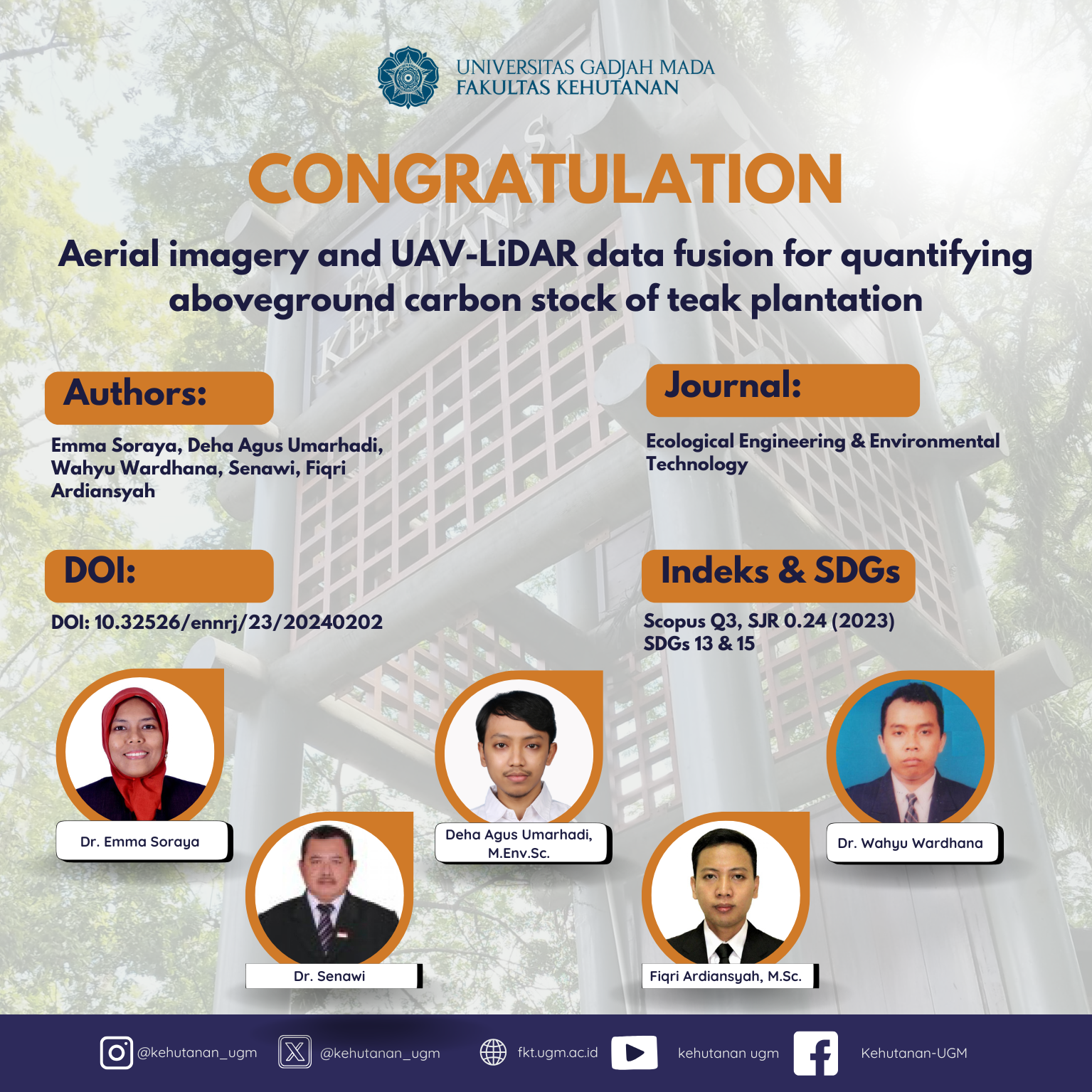
Abstract
This study examines four regression models to estimate tree-level above-ground carbon stock (AGC) in the clonal teak plantations of Wanagama Forest, Indonesia using a data fusion of UAV-LiDAR and RGB aerial imagery. Data collected in the field were diameter at breast height and tree height. Vegetation indices were derived from the visible bands of a georeferenced orthomosaic captured by DJI Mavic 2 Pro. The LiDAR data was obtained using GeoSun GS-100M device mounted on a quadcopter drone. Spectral features included RGB bands and vegetation indices, while vertical features consisted of a canopy height model (rasterized of normalized LiDAR point clouds) and relative height of LiDAR data. Additionally, the teak crown diameter was derived from object-based segmentation. Our study shows that crown diameter, Z max, and one of the Vegetation Indices are the three most influential features in estimating the AGC of individual tree in all models. Multiple linear regression (MLR) with eleven independent variables outperformed other models, showing a determination coefficient of 0.73 and providing the most accurate predictions of individual tree AGC, with MAE = 28.35 kg and WAPE = 34.13%. The teak stand predicted using MLR shows an average AGC of 64.15 Mg ha-1. The regression models developed are accurate for clonal teak plantations and provide a non-destructive way to monitor and manage carbon stocks as the basis for forest management and conservation strategies. However, the LiDAR and RGB spectral features may not capture all relevant tree characteristics, since this study acquired the airborne data during a teak leaf-off season, which may be challenging to distinguish between individual tree causing overestimated tree numbers. Teak sheds its leaves during drought thus similar studies at leaf-on conditions might adequately represent the characteristics of the teak tree.
SDGs:
SDG 13:Climate Action
SDG 15:Life on Land
Link Dokumen:
Download
